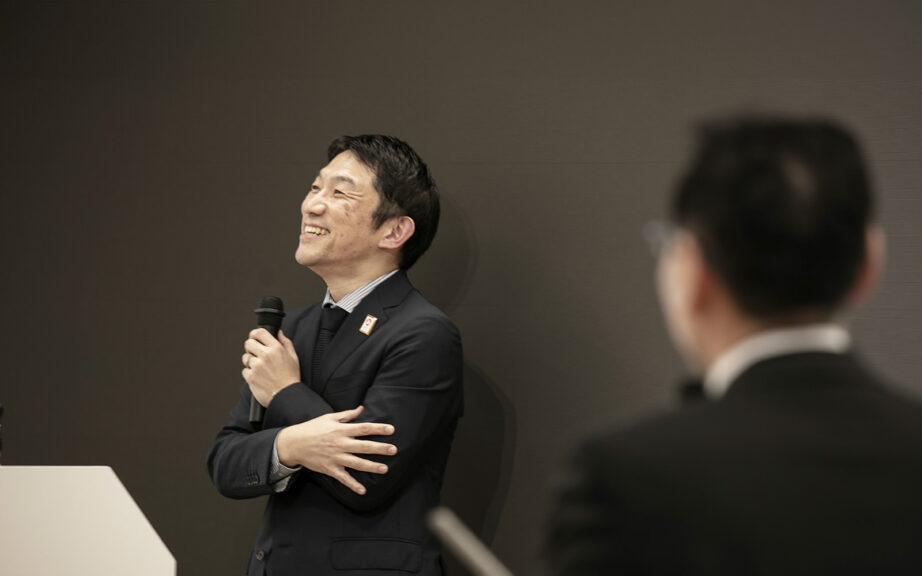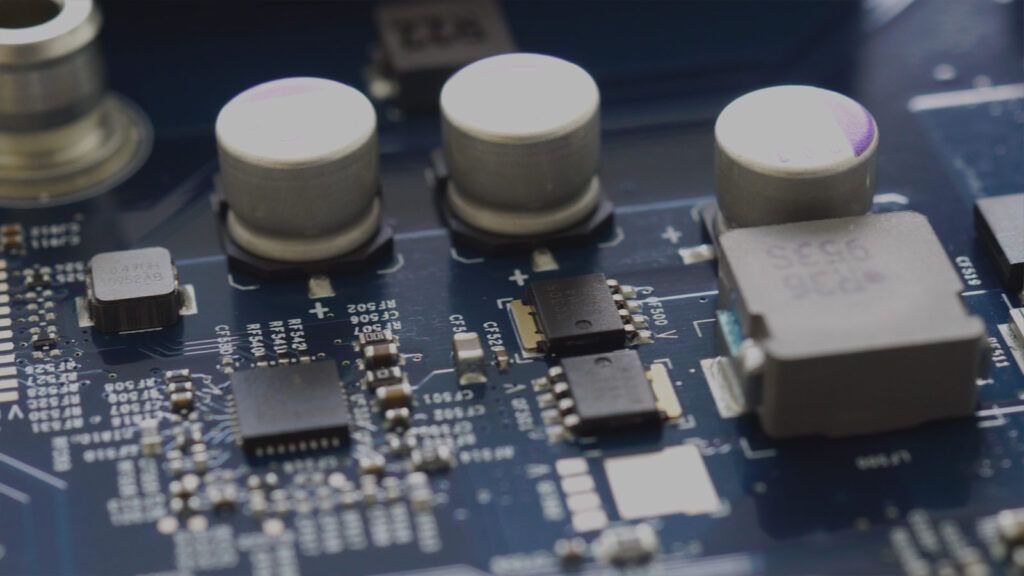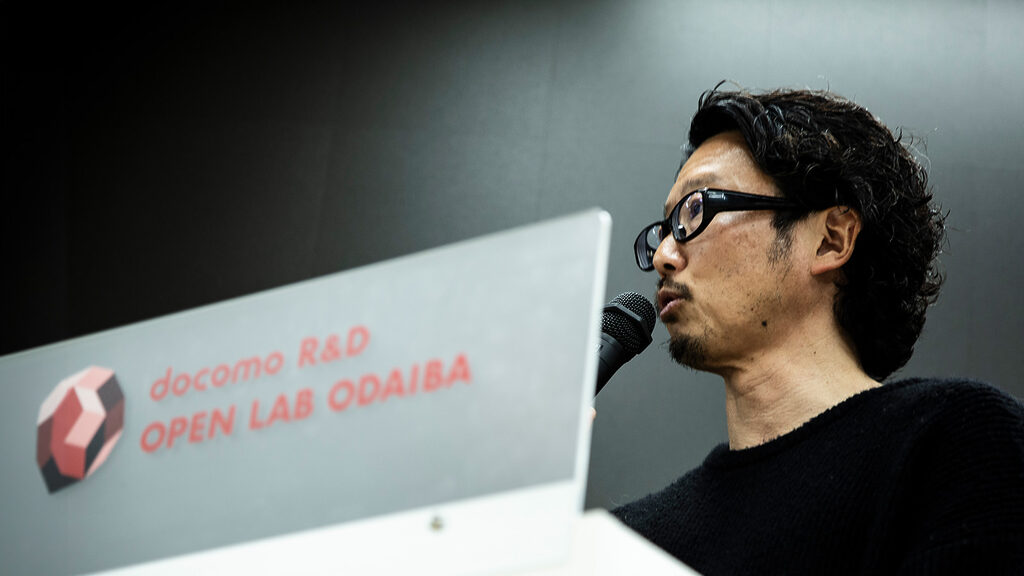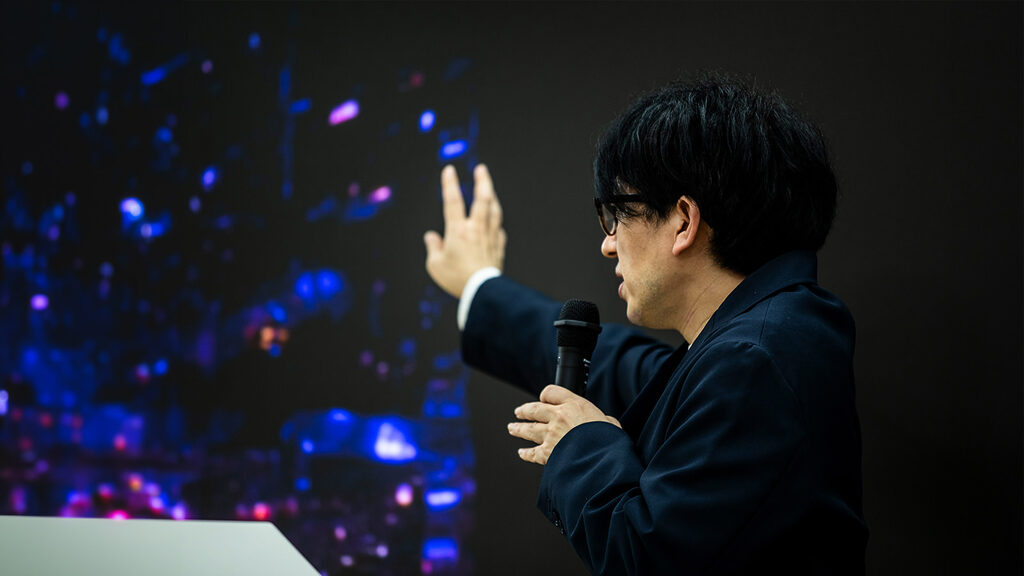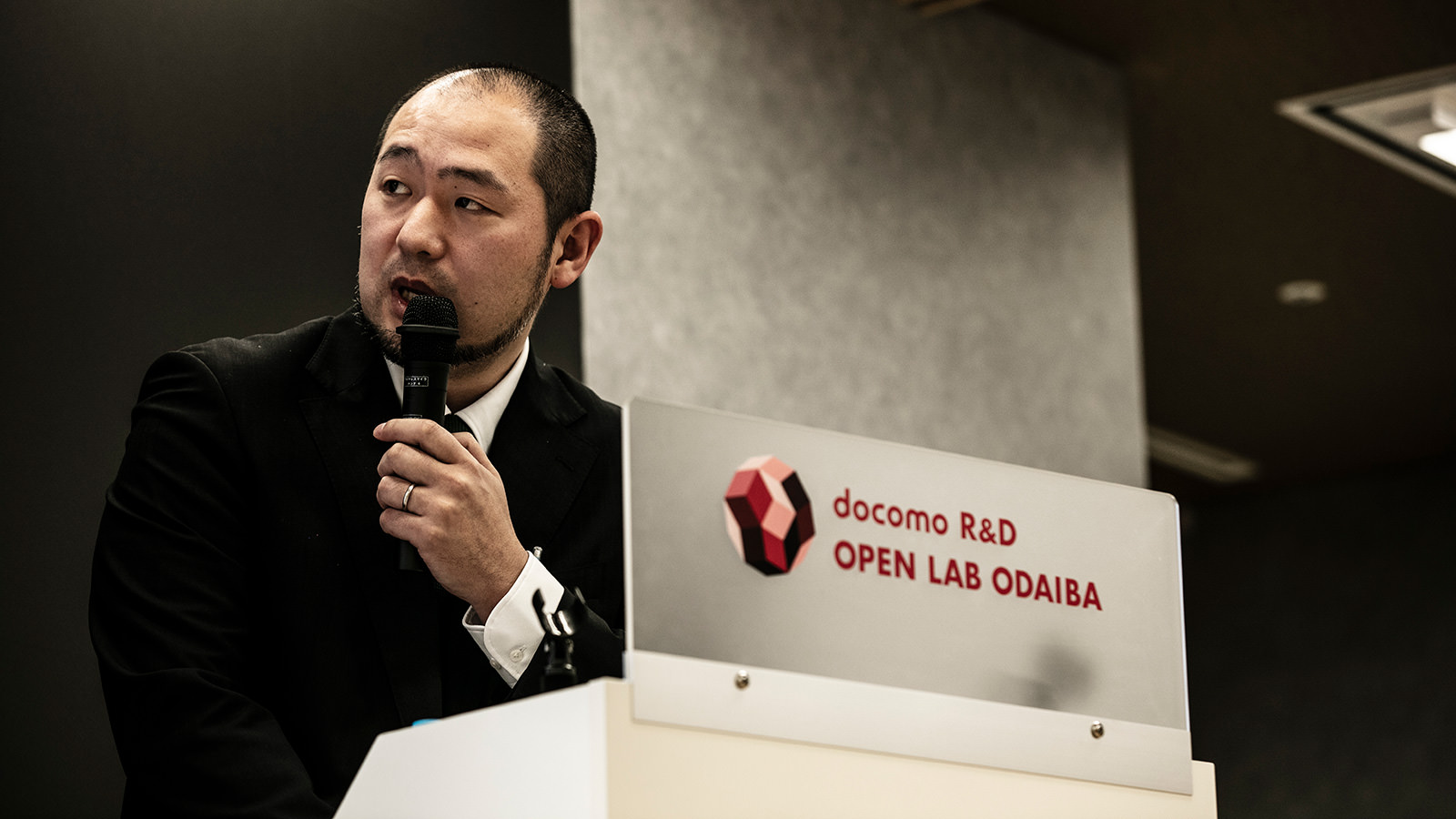
Accelerating Millimeter Wave Propulsion with L-shape AiM, a leading Metrosark™ (resin multilayer board) that allows circuit design in any shape" Hideki Ueda (Murata Manufacturing Co., Ltd.)
-5GMF Millimeter Wave Dissemination Promotion Workshop / Japan's Industrial Technology Frontline Report
The 5th Generation Mobile Promotion Forum (5GMF) held the first of its millimeter wave dissemination workshops, "Frontiers of Japanese Industrial Technology," in December 2023. The aim is to have a place to interact with people outside of the broad telecommunications industry, and the first session was held to discuss the unique electronics technology for consumer and medical...
2024/01/16
Posted on 2024/01/16
The 5th Generation Mobile Promotion Forum (5GMF) held the first of its millimeter wave dissemination workshops, "Frontiers of Japanese Industrial Technology," in December 2023. The aim of the workshop was to provide an opportunity to interact with people outside of the broad telecommunications industry, and the first session featured Murata Manufacturing, which demonstrates the value of its unique electronics technology in all fields, including consumer, medical, factory automation, and infrastructure. Mr. Satoshi Uozumi, General Manager of Millimeter Wave Business Promotion Department, and Mr. Hideki Ueda, Principal Researcher, spoke at the first session. In the second part of the report, Mr. Ueda will report on "Murata's Contribution to Society through Millimeter Wave Technology.
Development of a module with integrated antenna to overcome the challenges of millimeter-wave applications
Mr. Ueda of Murata Manufacturing Company, who spoke at the workshop, said, "I will focus on the technology part of millimeter wave. 5G is an essential part of the millimeter wave story, and I believe that the commercialization of 5G over the past few years has raised the profile of millimeter wave," he began. The millimeter wave frequency band has tremendous potential because it can utilize a wider bandwidth than sub6, the lower frequency band allocated to 5G. Although it is not used much at present, millimeter wave is positioned to be used more and more as mobile communication traffic increases in the future," said Ueda.
On the other hand, Ueda also noted, "Creating use cases that actively utilize the effectiveness of millimeter wave, rather than just waiting for traffic to increase, is important to accelerate the spread of millimeter wave.
How will the use of millimeter waves in 5G change from the conventional in the mobile terminals that enable mobile communications? From the aspect of Murata Manufacturing's related components, Mr. Ueda explains, "A distinctive feature is the use of an antenna array integrated module (AiM). sub6 has an RF (radio frequency) module used for wireless communication on the motherboard, and the handset manufacturer designs and connects the antenna to send out radio waves. There are several centimeters of wiring between the RF module and the antenna, which attenuates the signal, but this is not a major problem in sub6. On the other hand, the attenuation is higher for millimeter waves because the frequency is higher, and the same antenna configuration as sub6 cannot be adopted. Therefore, we developed an antenna-integrated AiM to solve the problem," said Ueda.
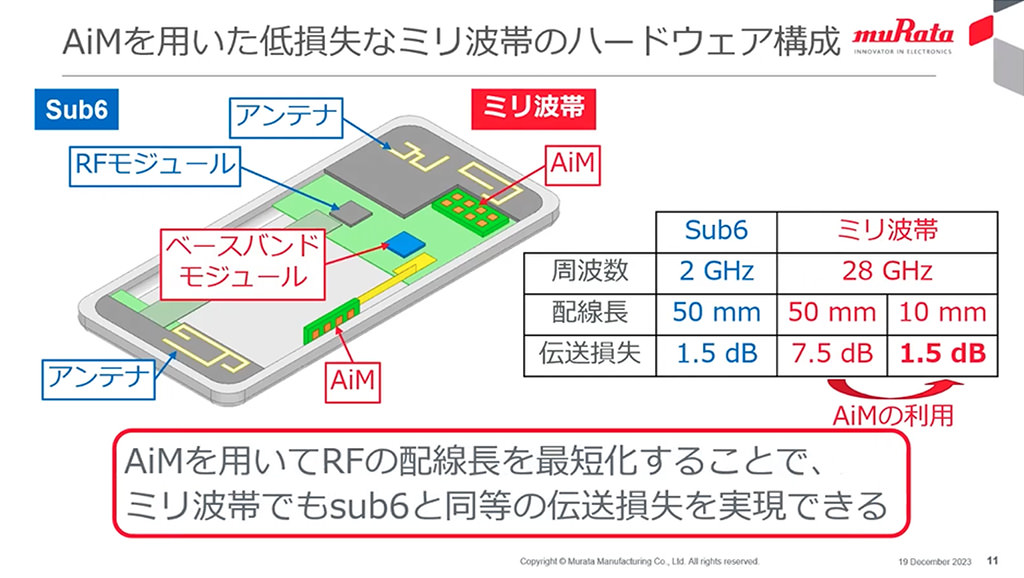
The AiM contains an antenna array of multiple antennas, an RF module IC (RFIC), and a connector in one package. We can now realize communication functions with the same level of system loss as sub6, and we can put millimeter-wave communication functions inside a mobile handset," explains Ueda. In other words, even antenna design, which was carried out by handset manufacturers in sub6, is now included in the module vendor's role, changing the way they do business.
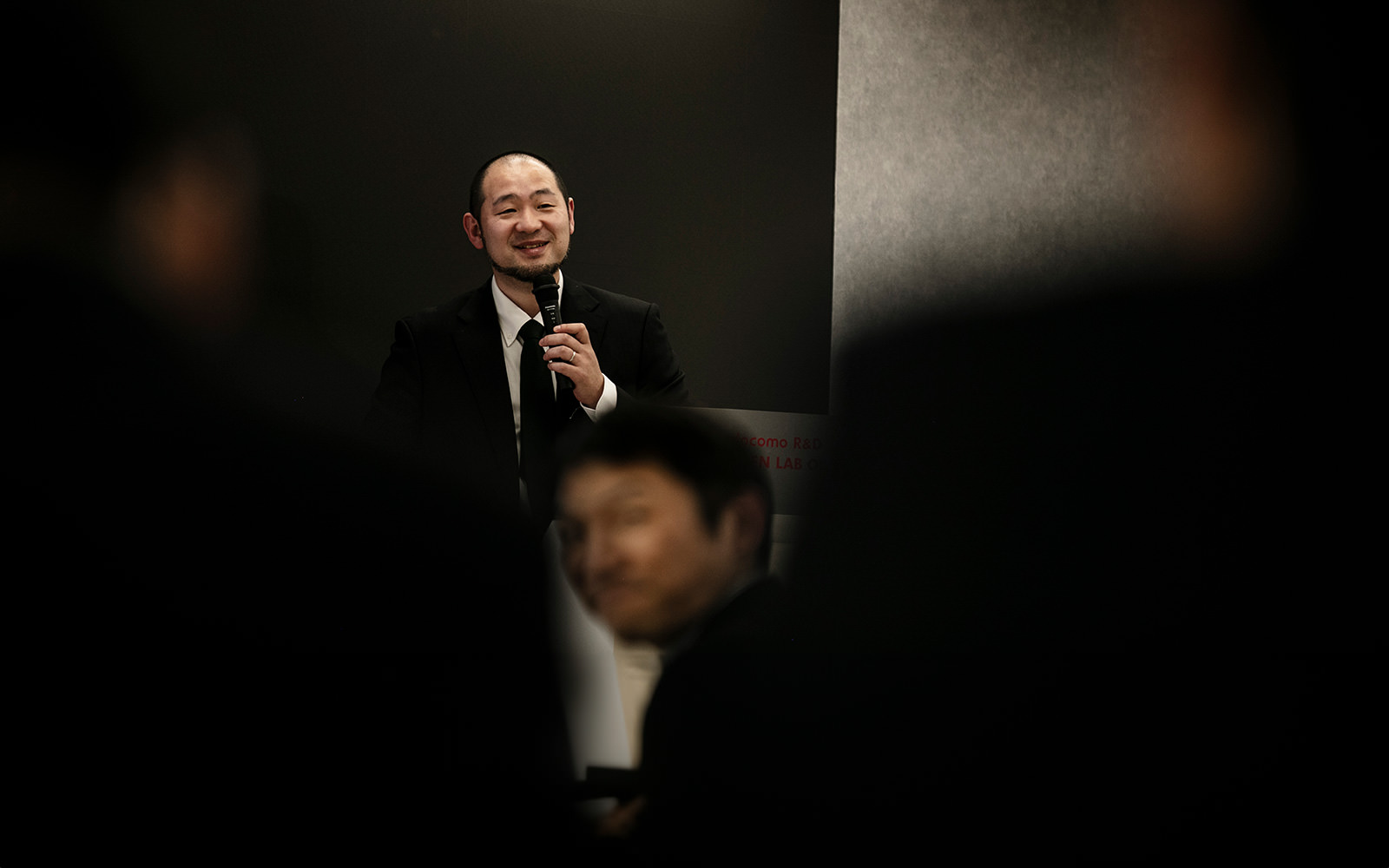
Murata's AiMs use a variety of technologies to add even more value. One example is the L-shape AiM. Murata has a multilayer plastic substrate called Metrosark™ that allows circuit design in any shape. It can be bent and deformed, making it possible to mount antennas facing 90 degrees in different directions on a single substrate," says Ueda. If antennas facing in two directions are mounted on a flat printed circuit board, called a normal flat-shape AiM, twice as many components and ICs are required compared to an L-shape AiM. By taking advantage of the L-shape AiM's ability to direct the antenna in multiple directions with a single component or IC, we can achieve wide coverage, low cost, and miniaturization at the same time," says Ueda. L-shape AiM is already in mass production and is being installed in smartphones.
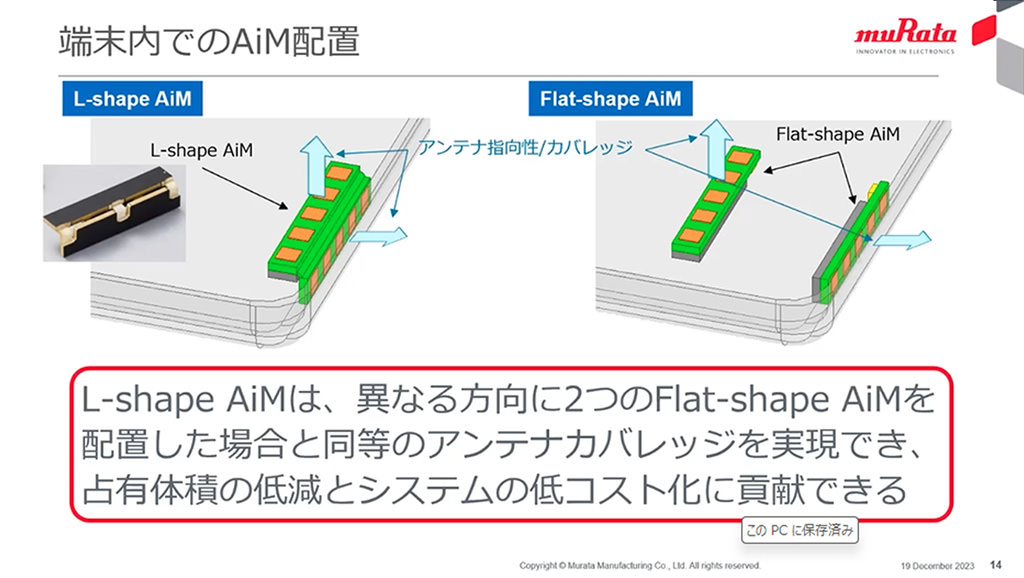
Antenna technology to deliver non-flying millimeter waves to targeted locations
Murata's contribution to the utilization of millimeter waves is not limited to module technologies such as AiM. Murata also has outstanding technology in the antennas themselves. It is true that millimeter waves do not fly and are difficult to fly, but we can make them fly by using antenna technology," says Ueda. One of them is to achieve high gain," says Ueda. This is a technology to extend the range of radio waves by beamforming, which concentrates radio waves in a targeted area. To increase the gain of an antenna, it is possible to use a large antenna, but in the case of millimeter wave, the gain is increased by preparing an effectively large area by arraying multiple antennas in a row.
On the other hand, higher gain in beamforming results in weaker signals to areas that are not targeted. Therefore, in order to expand coverage, "wide coverage technology is required, for example, by changing the direction of the beam or expanding the range over which the beam direction can be changed," says Ueda. The technology used here is phased array. It is possible to increase the gain even in a direction of about 45 degrees," says Ueda.
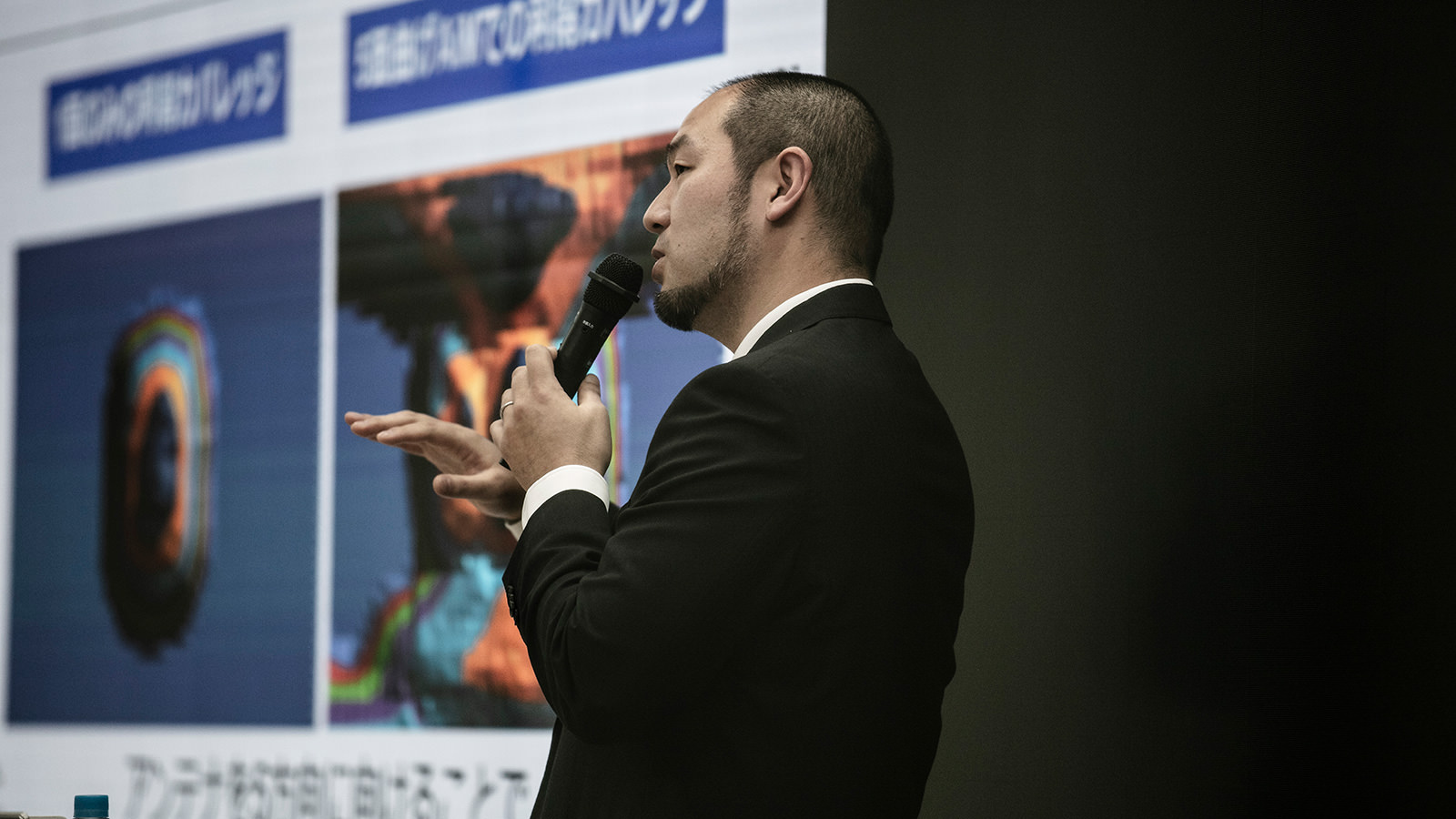
However, Murata is developing the technology as there are still issues with phased array as well. For directions where it is difficult for radio waves to fly even with beamforming and phased array, Murata is developing modules with antennas facing multiple directions using L-shape AiM and Metrosarc™ technologies. As a concept model, a prototype AiM with antennas pointing in five directions (front, top, bottom, left, and right) was developed and found to cover nearly half of the space. Using two of these antennas, we can cover almost all directions. Although it remains to be seen whether we will be able to commercialize an AiM with this shape, it is something that only Murata, with its module and antenna technology that can produce multi-sided shapes, can do, and it is a fundamental technology for providing modules with higher performance and wider coverage at a lower cost," says Ueda.
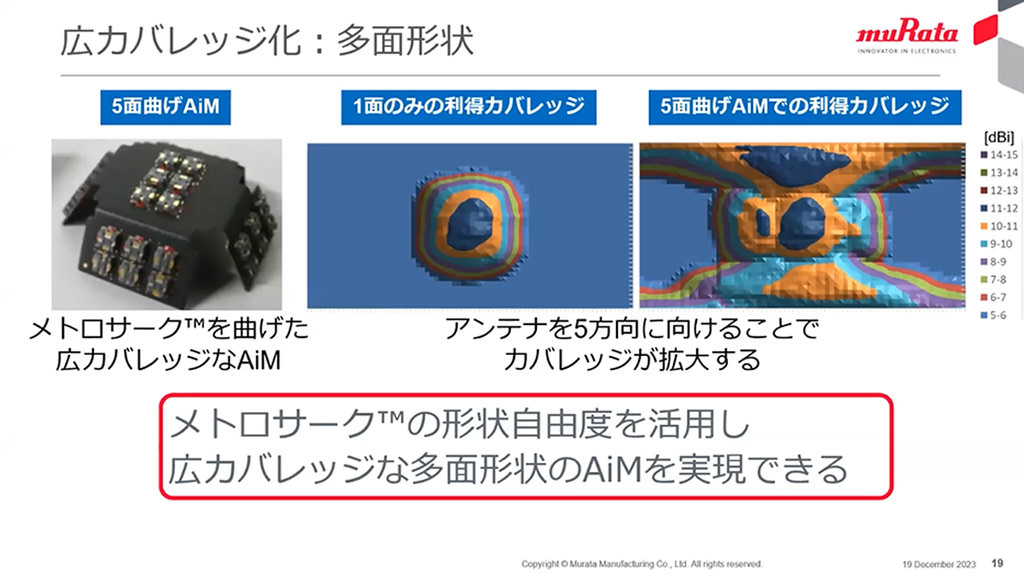
In addition, the company is also looking ahead to develop antenna technology to utilize millimeter waves. We have a problem in that it is difficult to obtain high characteristics when the antenna is formed inside the substrate. To solve this problem, we have developed a prototype based on the concept of having the antenna protrude outside the substrate. (We verified that sufficient gain and bandwidth could be obtained in the 60 GHz band (millimeter wave band, but a different band from 5G)," said Ueda.)
In addition, to facilitate multibanding, in which radio waves in different frequency bands are transmitted and received in a single module, the company has also developed a technology that allows antennas corresponding to different frequency bands to be superimposed in the same area of the substrate. As Mr. Ueda puts it, "Radio waves have polarization, and both longitudinal and transverse polarization can be treated as signals at the same time. The prototype that appears to have four antennas actually has 16 antennas mounted. If we combine the L-shape AiM, we can mount 32 antennas," he said, revealing the seeds of future technological development.
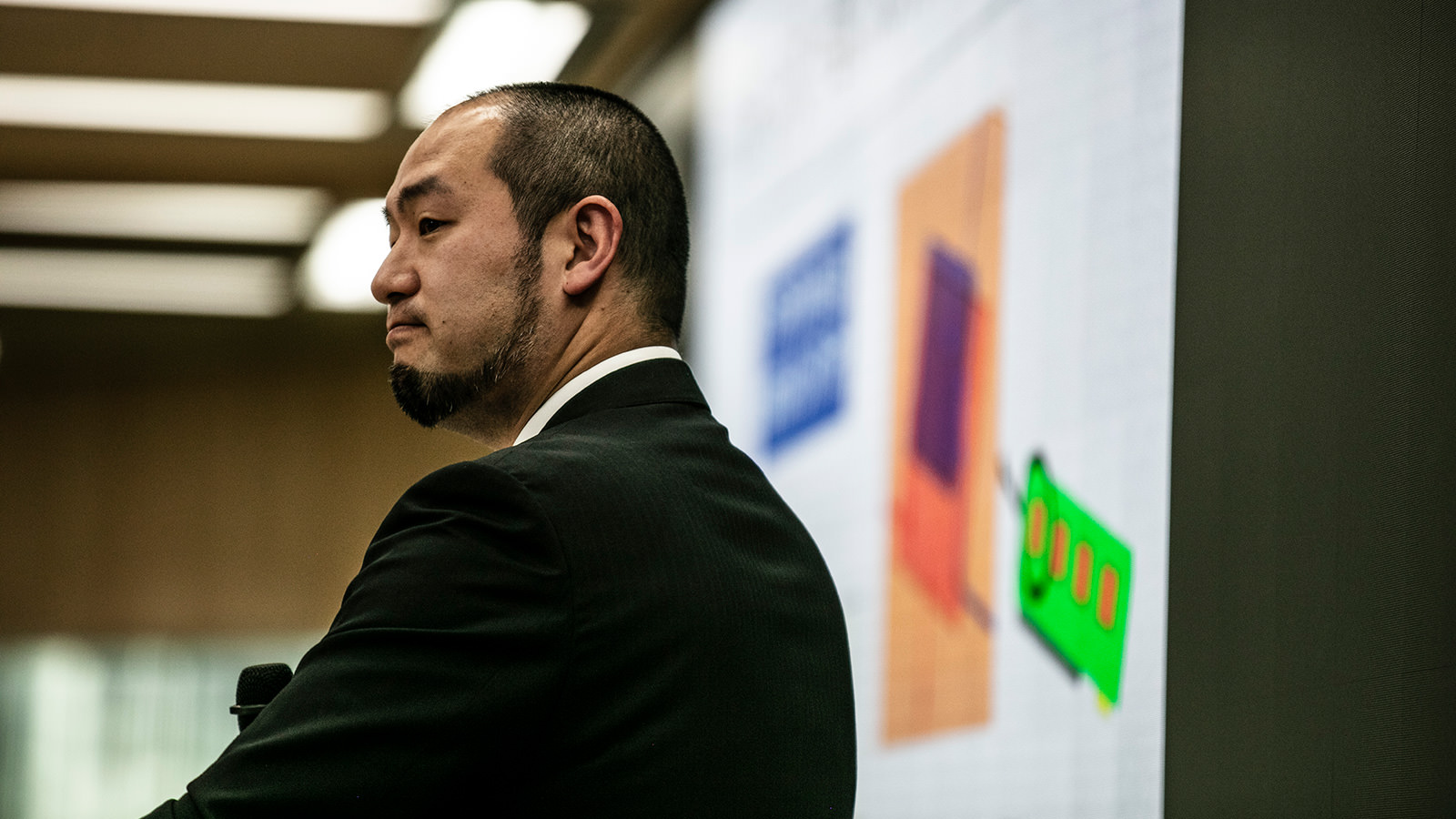
Beyond higher performance and thinner, thinner, and smaller, we are looking ahead to "environmental contribution using millimeter wave".
After explaining the leading edge of technology, Mr. Ueda reiterated Murata's contribution to society in millimeter wave-related fields. Millimeter wave technology can save energy," he said. Depending on conditions, it has been reported that beamforming in the millimeter wave band to target specific directions can reduce overall transmission power to the order of one-hundredth, rather than using the lower frequency microwave band to cover a large area and many terminals," said Ueda.
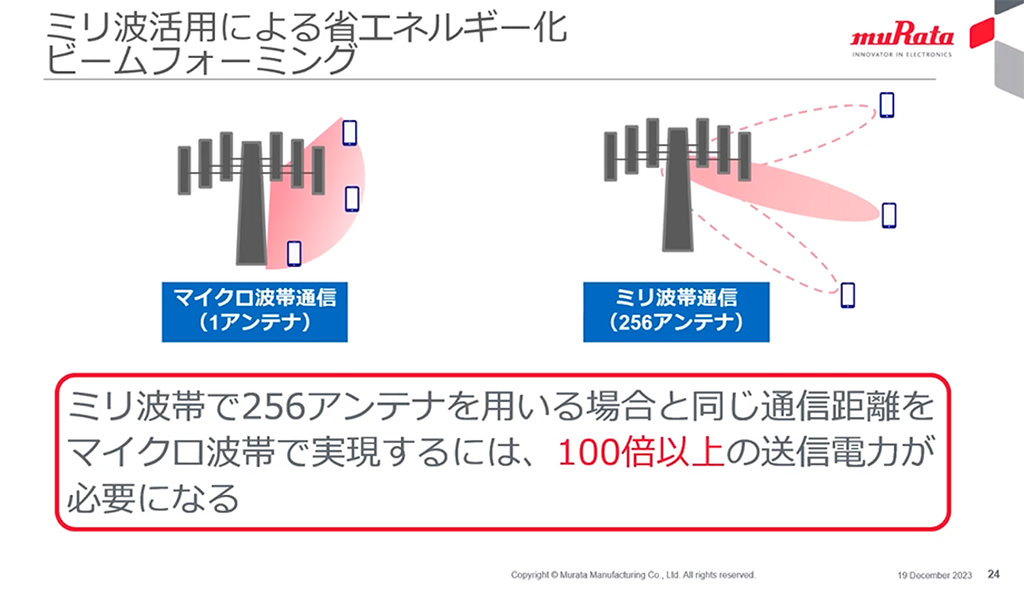
Furthermore, Murata Manufacturing's demonstration also showed that when transmitting power per throughput was calculated between 60 GHz millimeter wave band communications (WiGig® standard) and regular Wi-Fi™ using a lower frequency band of several GHz, the millimeter wave band was able to achieve the same throughput with about half the power. This is an example of how the use of millimeter wave itself can contribute to society.
Mr. Ueda then lists "light, thin, short, and small" as one of Murata's strengths. I believe that the technology to make things smaller and thinner is our greatest strength," he said. Not only does it reduce the volume and space taken up by products, but it also contributes to the environment in terms of effective use of resources and lowers costs. We believe that making products smaller and thinner while maintaining and improving their characteristics and making customers happy, as well as being environmentally friendly and achieving low power consumption, will contribute to society.
Achieving both lightness, thinness, and smallness and high performance is not an easy task. Even in such a situation, Murata says, "We are developing products that not only have characteristics such as high speed, high capacity, and low latency, but also lower cost and environmental impact. While developing millimeter wave technology, we would like to make technological innovations that are useful to society," says Ueda, who is also looking ahead to the social contributions that lie ahead in the fields of 5G and millimeter wave technology development.
(5GMF Millimeter Wave Dissemination Promotion Ad Hoc and TeleGraphic Editors)


